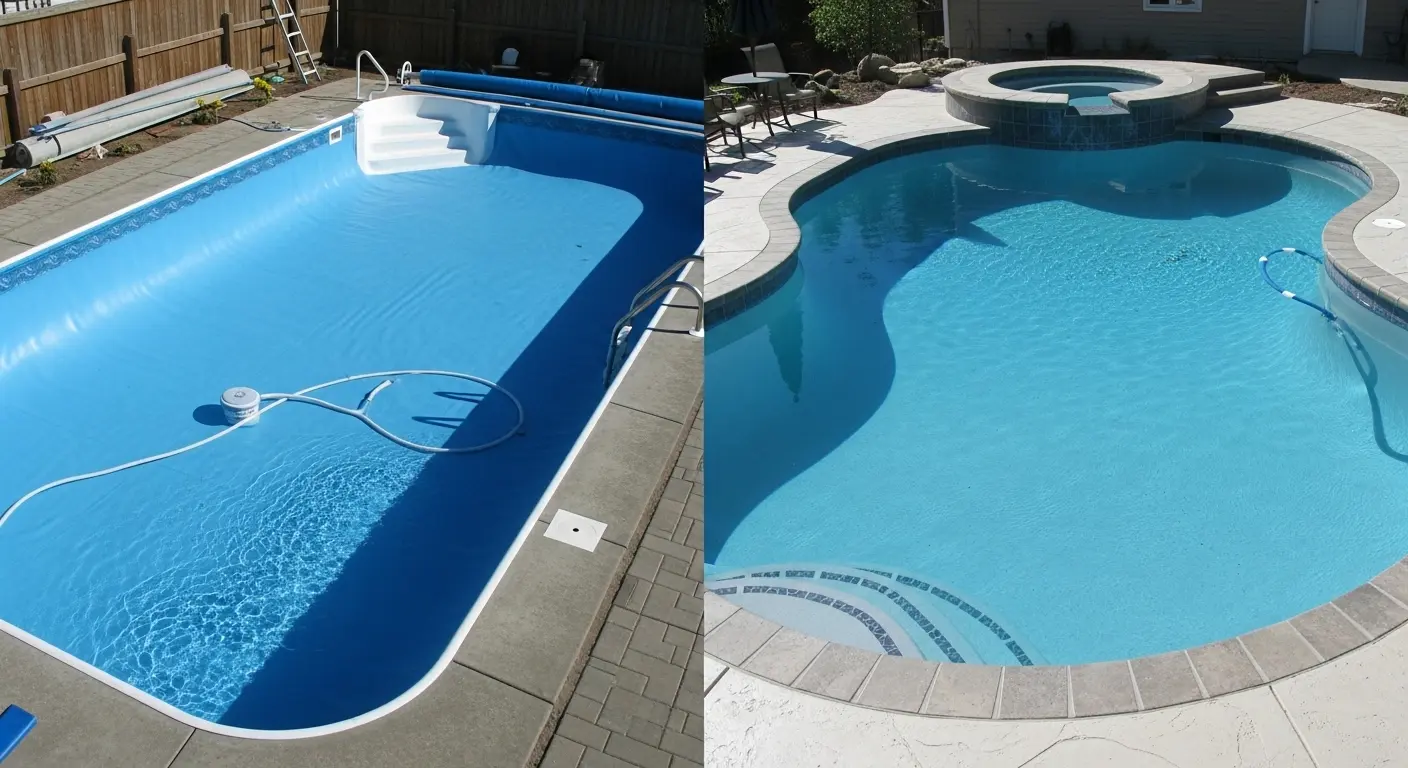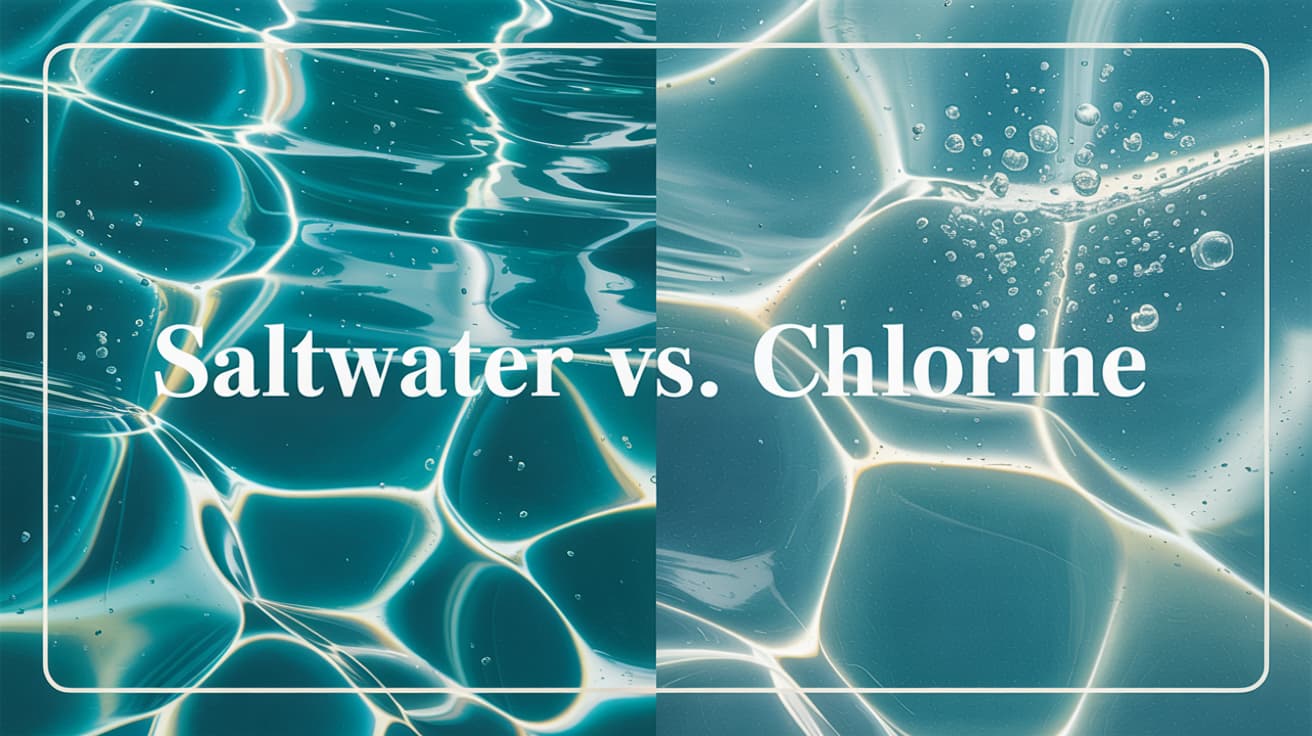What Are the Common Signs of a Pool Leak?
Early detection of a leak can save you much more in the future. Common signs you should be on the lookout for:
- Wet spots around pool: Mysterious wet areas in your grass or on your deck may indicate a leak.
- Lower water level: The sudden drop of the water level is an indication of a leak.
- Algae growth: In excessive algae growth post-chemical treatment may also indicate a leak, as the pool chemicals get diluted.

Tools and Techniques for Effective Leak Detection and Pool Inspections
You can accurately detect a vinyl pool leak with these two techniques:
- Dye Test: This is one of the most effective ways to confirm a suspect of a leak, especially where the liner is accessible. Put some dye on the suspected leaking area. If it is a case of leakage, then the dye will flow towards the leakage, confirming a leak.
- Electronic Leak Detection: This method is used to determine leaks in the vinyl liner pool where it tracks changes using electrical conductivity from water.
Identifying the Exact Location of the Leak
Pinpointing the exact location of a leak is essential for effective repair. Techniques include:
- Pressure Testing: A test during which plumbing sections are isolated; the loss of pressure will reveal a leak in the swimming pool.
- Listening Devices: Use hydrophones in identifying leaks inside the pool structure by listening for specific sounds in underwater environments. This method is particularly effective because sound travels well in water, making it a reliable tool for underwater leak detection.
DIY Repair: Using a Vinyl Liner Repair Kit
For minor leaks, a DIY approach can be both effective and economical:
- Select the Appropriate Kit: make sure that the kit is suitable for use under water in case the pool can't be drained.
- Prepare the Area: Clean surrounding the site of the leak and dry off the area if not using underwater kit.
- Cut the Patch: Use a patch from the repair kit slightly larger than the hole or tear. Round the edges of the patch to prevent peeling.
- Apply the Patch: Apply patch following kit instructions. Carefully position the patch over the area and press firmly to remove any air bubbles while making sure the edges are well sealed.
- Allow to Cure: Refer to the kit’s instructions for curing time before refilling the pool or subjecting the patch to stress.
When to Call in the Professionals for Pool Leak Repairs
Certain situations require help from pool leak repair professionals:
- Large or Inaccessible Leaks: If the leak is not within easy reach or covers a large area, professional repair services are necessary.
- Structural Repairs: Cracks in the pool shell or significant damage to plumbing may require more complex repairs that professionals should handle.
"Leave the leaks to us at Pinnacle Pool Services, where we seal each one with precision and care, restoring not just your pool, but your peace of mind."
Preventative Measures to Avoid Future Leaks
Preventing leaks before they occur is the best strategy:
- Regular Inspections: Regularly inspect the pool deck, the liner, fittings, and for wear and tear.
- Maintain Water Chemistry: Proper chemical balance prevents material degradation that can lead to leaks.
- Prompt Repairs: Fix little problems in your swimming pool before they turn into big ones.
The Costs Associated with Repairing Pool Leaks
Understanding the costs involved can help you budget for repairs:
- DIY Repairs: Minor pool repairs can cost as little as the price of a repair kit ($20-$50).
- Professional Services: Depending on the severity, professional leak detection and repair can range from $200 to over $1,000.

Final Thoughts: Maintaining Your Pool Post-Repair
Maintaining your pool after addressing leaks is crucial for ensuring long-term functionality and enjoyment:
- Regular Monitoring: Keep an eye on water levels and the condition of the repair site.
- Follow-Up Inspections: Have your pool inspected periodically by a professional to ensure everything remains in optimal condition.




.jpg)







